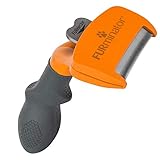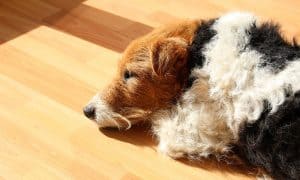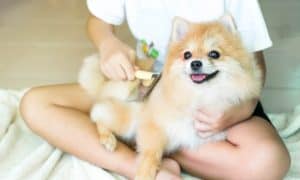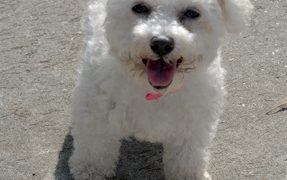“This post contains affiliate links, and I will be compensated if you make a purchase after clicking on my links.”
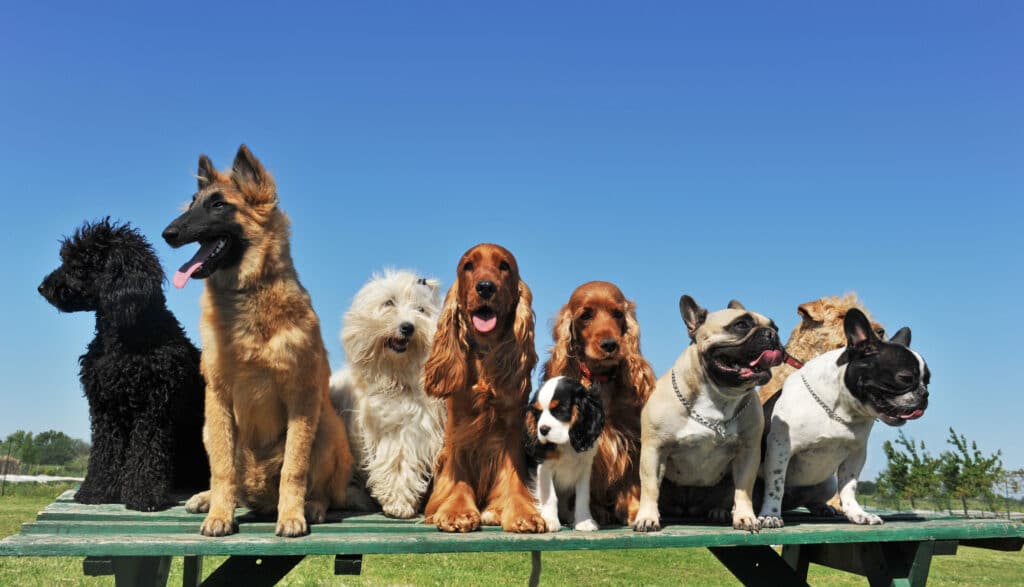
Dogs don’t only come in all shapes and sizes, but also coat types. And their coat is one of their most defining feature that easily sets them apart from each other.
There are different dog coat types – and each one of them require different grooming methods and products.
And knowing how to properly groom your dog depending on their coat is important. It helps keep their overall health and well-being in tip-top condition.
So, continue reading for your guide to dog coat types and how to properly take care of each of them.
The Importance Of A Dog’s Coat
The condition and appearance of a dog’s coat can indicate your furry friend’s health status. Besides making dogs look majestic, their coat plays important roles that keep them healthy in many ways.
The following are some of the basic yet most important roles that a dog’s coat perform:
- Protection. A dog’s coat acts as a physical barrier from many external elements. It helps prevent direct skin contact from potential irritants and allergens such as UV rays, dirt, debris, hot surfaces and even chemical damage.
- Insulation. A healthy coat helps a dog regulate their body temperature, especially in extreme weather conditions. It provides warmth during winter and offers protection against the heat during summer.
- Immunity. While a dog’s coat doesn’t directly impact a dog’s immune system, it provides a protective barrier for the skin, which is a vital part of their immune system, against infections, health issues, and harmful bacteria.
- Health Indicator. A dog’s coat is a good indicator of its health status. Most of the time, veterinarians assess a dog’s health by looking at the coat’s condition. A shiny and clean coat usually means a healthy canine. And a dry, flaky, or dirty coat usually indicates a health issue.
10 Dog Coat Types
Different dog coat types require different grooming requirements. Below, we have listed down all the dog coat types you need to know about and tips on how to properly take care of them.
1. Smooth Coat
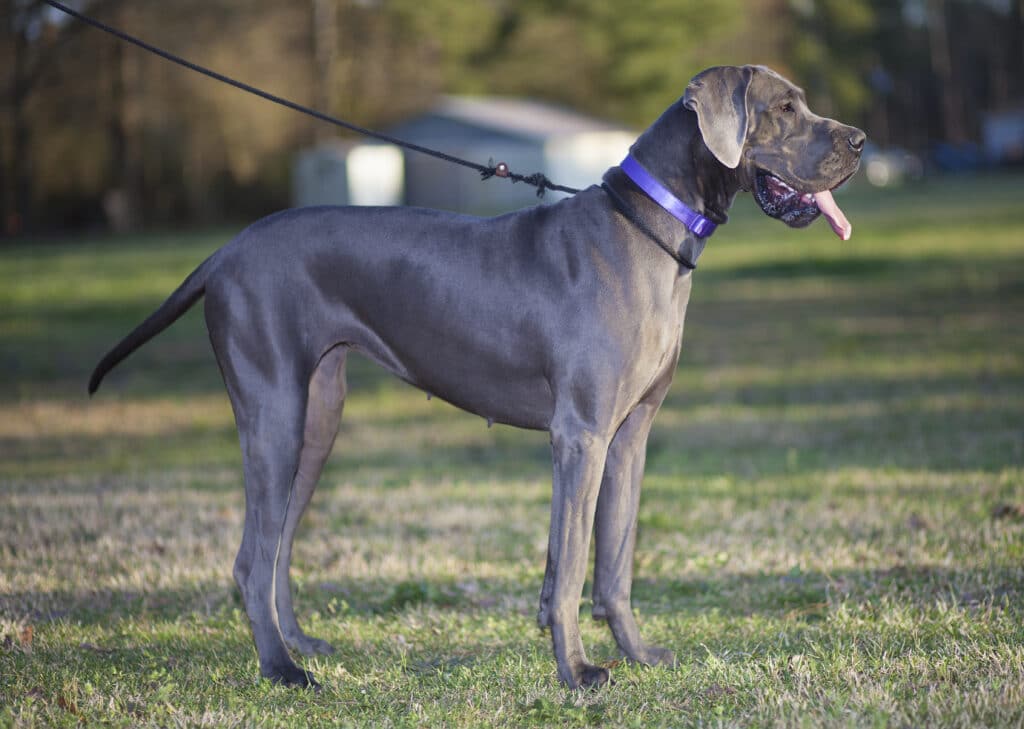
This coat type is also referred to as a short coat. And that’s because this kind of coat is best described as both smooth AND short.
Dogs with this coat have short hair that lies close and flat to their body. The coat is also shiny and smooth with no texture. While the hair is short, it provides enough protection that help keep dogs warm due to the heavy layer of hairs growing closely together.
And if you think that dogs with smooth coat do not shed as much, then you’re in for a ride! As a result of the heavy layer of hair in the coat, breeds with this coat type can actually shed heavily.
Breeds With A Smooth Coat
Here are some dog breeds that have a smooth and short coat:
- Beagle
- Doberman Pinscher
- Greyhound
- Labrador Retriever
- Great Dane
- German Shorthaired Pointer
- American Staffordshire Terrier
- Dalmatian
- Pug
- Bulldog
- Pointer
- Italian Greyhound
How To Take Care Of A Smooth Coat
Among all dog coat types, taking care and grooming a smooth coat is by far, the easiest. So if you’re someone who doesn’t have a lot of time to groom your dog, then dogs with this kind of coat are ideal for you!
Here are a few tips in order to take care of a smooth coated dog:
- Brush them at least once a week. Brushing smooth coated breeds is easy because their hair is short and they do not mat. You can brush them at least once a week with a bristle brush. And to remove dander from the skin and keep the coat shiny, you can use a fine tooth comb. Here are a few options for you:
- Bathe them once a month. Usually, smooth coated dogs do not need to be bathed as often as other dog coat types. Bathing them at least once a month will be enough. However, if you have an active dog that likes to get dirty during play time or walks, then you can bathe them as often as needed.
- Use shampoo and conditioner. Since smooth coated dogs usually shed a lot, using a de-shedding shampoo is ideal. Furthermore, the skin of these dogs can be somewhat sensitive, so we recommend using these gentle shampoo and conditioner.
2. Medium Coat
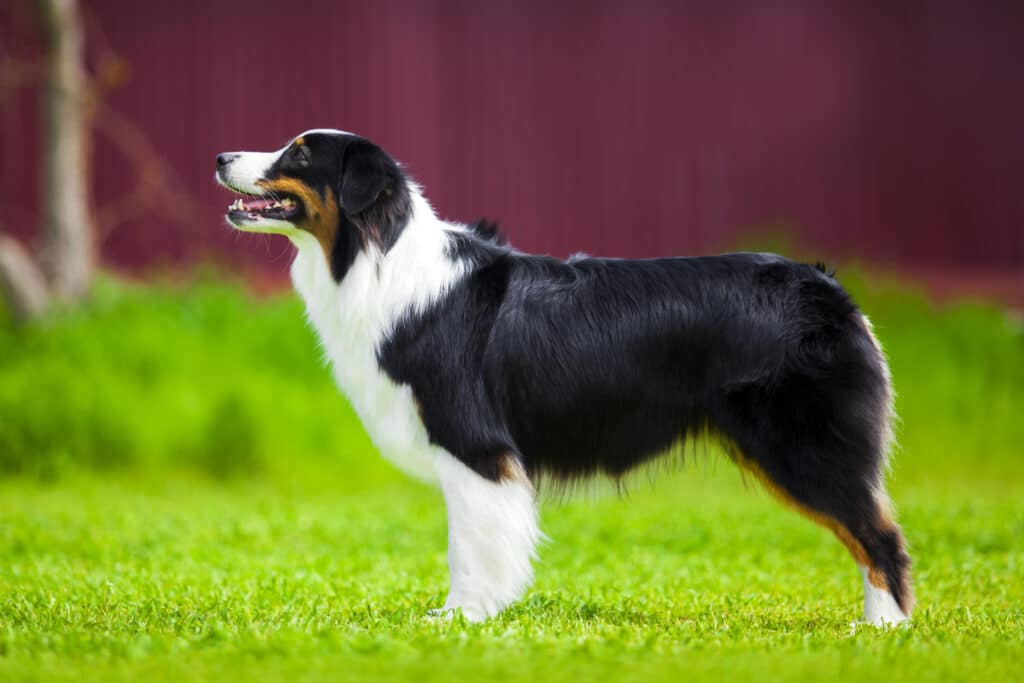
This is described as a coat that grows to a mid-length. And it’s somewhere in between the short and long dog coat types.
With a medium coat, the hair that grows is longer than an inch, but shorter than two inches. That means dogs with a medium coat have hair that don’t lie flat on their body and they have a bit of a wavy, fluffy hair.
Breeds With A Medium Coat
Here are some dog breeds that have medium coats:
- Golden Retriever
- Border Collie
- German Shepherd
- Shiba Inu
- Australian Shepherd Dog
- Belgian Tervurens
How To Take Care Of A Medium Coat
Taking care of a medium coat can also be fairly easy. But unlike smooth and short dog coat types, the medium coat can be prone to matting.
Here are a few tips to take care of a medium coated dog:
- Brush them daily. To avoid matting and remove built-up dirt in the coat, it’s best to brush these dogs regularly. Using a slicker brush will help get rid of tangles and distribute natural oils throughout the coat.
Here are a few slicker brush recommendations:
- Bathe them once a month. Like smooth coated dogs, bathing a medium coated dog once a month is enough. But of course, if you have an active dog, bathing them more regularly is ideal.
- Use shampoo and conditioner. Using a gentle shampoo and conditioner is ideal for medium coated dogs when bathing. Furthermore, natural and gentle options are soothing, hydrating, and help keep the coat shiny and the skin healthy.
Here are a few recommendations from us:
3. Long Coat
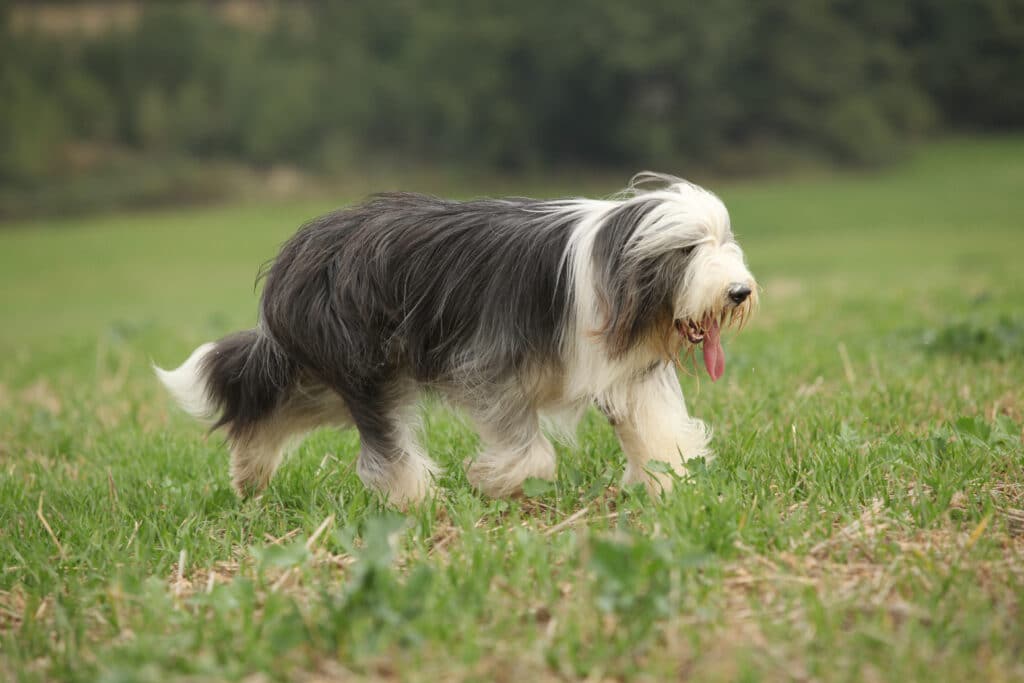
As the name suggests, this kind of coat is long and when it grows, it can actually reach the floor! With that said, you have to know that this can be one of the most demanding dog coat types as it requires a lot of grooming.
Long coated dogs can either have silky hair or coarse hair. A long and silky coat doesn’t have an undercoat. While a long and coarse coat has a soft undercoat.
But regardless of the type of long coat they have, dogs with this coat need regular attention since their hair can be very prone to matting and tangles.
Breeds With A Long Coat
Here are some dog breeds that have long coats:
- Bernese Mountain Dog
- Afghan Hound
- Bearded Collie
- Yorkshire Terrier
- Maltese
- Havanese
- Shih Tzu
- Shetland Sheepdog
How To Take Care Of A Long Coat
Maintaining and taking care of a long coated dog is not a walk in the park. These dogs require meticulous and daily grooming, as they can easily develop matting and tangles.
And because maintaining such long coat takes a lot of effort, dog parents sometimes opt to cut the fur short into a puppy cut to make grooming a bit easier.
Regardless, here’s how you can take care of a long coated dog:
- Pick and use the right brush. Daily brushing is a must for these dogs. But you have to choose the right brush to do the job. If you have a dog that has a long and silky coat, then a pin brush and a slicker brush would be your best tools. However, if you have a dog that has a long and coarse coat, a pin brush along with a smooth bristle brush and de-shedding tool will do the job.
If you’re looking for de-shedding tool recommendations, then look no further!
- Use a de-tangling shampoo. To make bath time more comfortable, use a de-tangling shampoo to soften and loosen the hair. The product makes it easier to brush through tangles and mats.
- Use a conditioner. To make the coat softer and easier to manage during bath time, using a conditioner will also help de-tangle mats.
- Dry the coat with a hair dryer. For smooth, short and medium dog coat types, air drying is possible. But the same cannot be applied to a long coat. In order to fully dry a long coated dog’s hair, you have to use a hair dryer after bathing them.
4. Single Coat
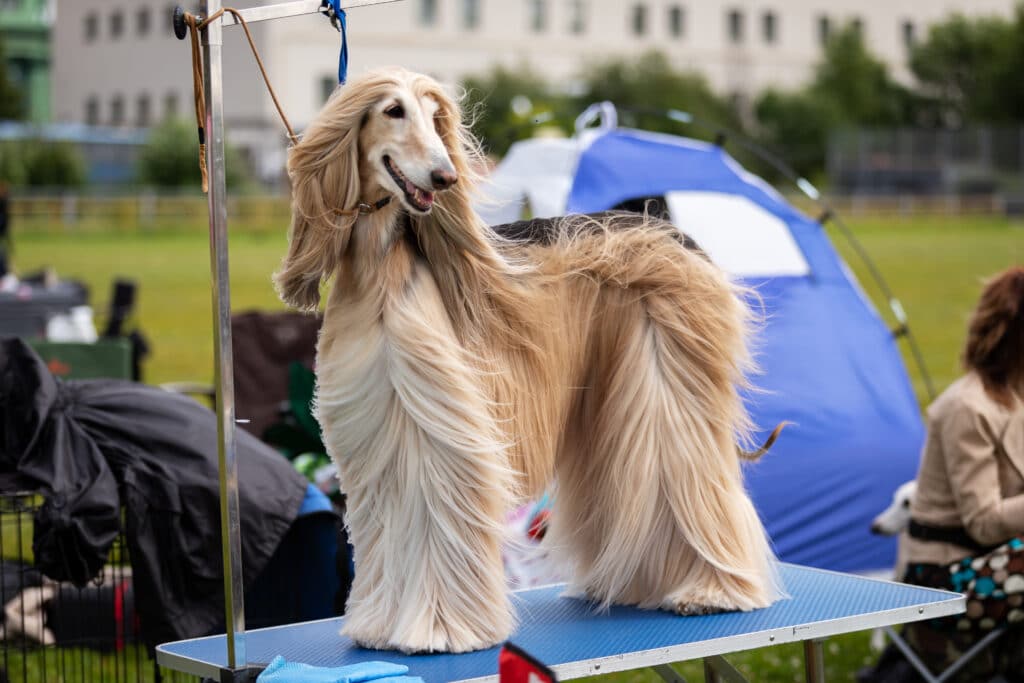
A single coat is described as a type of coat that lacks an undercoat. The hair grows without a dense, and usually, soft undercoat beneath it.
As the name suggests, this coat only has one layer of fur, which is, most of the time, short and close to the body. However, there are also instances where the fur is long and silky.
Due to the lack of a dense undercoat, single coated dogs are better adapted to warmer climates. And they need to wear dog jackets during the colder season because they do not have the added insulation that only an undercoat can offer.
Furthermore, among the dog coat types, single coated breeds usually shed less, thanks to the lack of an undercoat, and are usually hypoallergenic.
Breeds With A Single Coat
Here are some dog breeds that have single coats:
- Greyhound
- Chihuahua
- Afghan Hound
- Doberman Pinscher
- Great Dane
- Italian Greyhound
- Poodle
- Maltese
How To Take Care Of A Single Coat
Maintaining a single coat is similar to the upkeep of smooth, short and medium dog coat types. Here are a few tips on how to take care of a single coat:
- Brush the coat. Although single coated dogs shed less and usually have shorter hair, brushing is still a must. And how often you brush them will depend on the length of your dog’s hair and its needs.
- Bathe them once a month. Of course, bathing is important. But since single coats require less grooming effort, bathing them at least once a month is enough, unless they like to get dirty, especially when they go and play outside.
- Provide additional insulation. As mentioned above, single coated dogs do not have an undercoat to provide them added insulation during winter. So during the colder months, use doggy sweaters and jackets to keep your pooch warm.
5. Double Coat
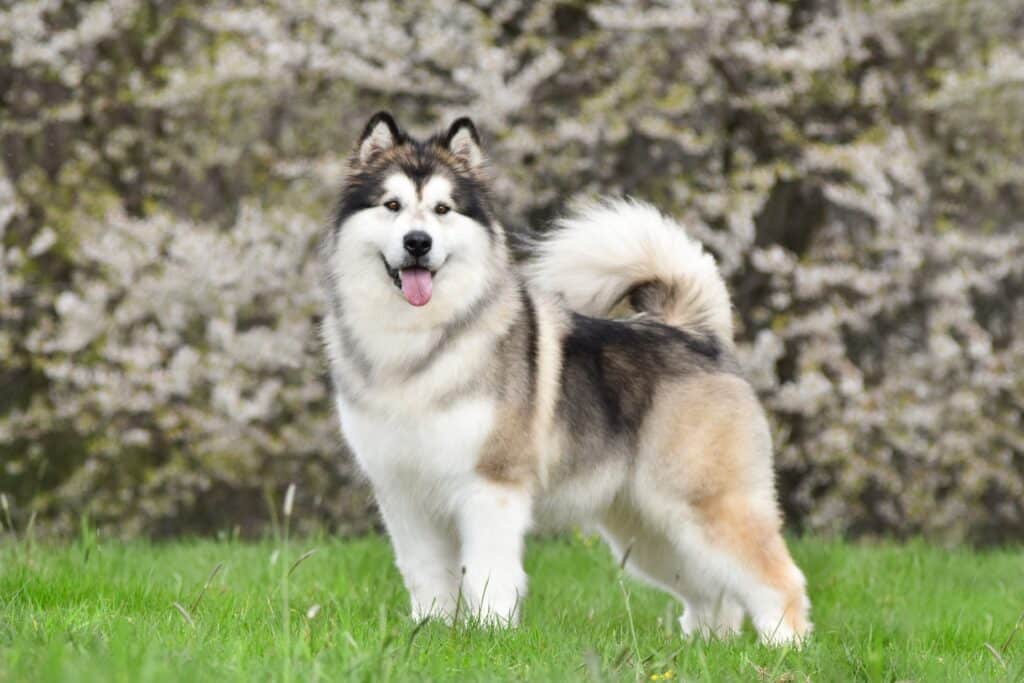
This dog coat type consists of two layers of hair – the outer coat, which is usually long, and the undercoat, which is closer to the skin, and is usually short, dense, and has a soft, woolly texture.
Unlike single coated dogs, double coated dogs do well in the cold thanks to the added insulation of their undercoat.
And among all dog coat types, the double coat is known to shed a LOT. During shedding seasons, which usually happens twice a year, a dog with a double coat will shed their undercoat. This process is also referred to as a “coat blow”.
Breeds With A Double Coat
- Akita
- Siberian Husky
- Alaskan Malamute
- Airedale Terrier
- Chow Chow
- German Shepherd
- Shetland Sheepdog
- Shiba Inu
- Pomeranian
How To Take Care Of A Double Coat
The upkeep of a double coat takes a lot of effort, especially when they blow their coat. And they need a bit more grooming effort than other dog coat types.
Here’s a few tips on how you can take care of and groom a double coat:
- Pick and use the right brush. Since double coated dogs have two layers of fur, it’s important to use the right tools when brushing them. Use a slicker brush for the undercoat and a metal comb for the top coat.
- Use undercoat tools. For double coated dogs, having a brush and a comb isn’t enough, especially for dogs that have longer undercoats. An undercoat rake and de-shedding tool will do a great job at helping you control your dog’s shedding.
Here are our undercoat rake recommendations:
6. Wire Coat
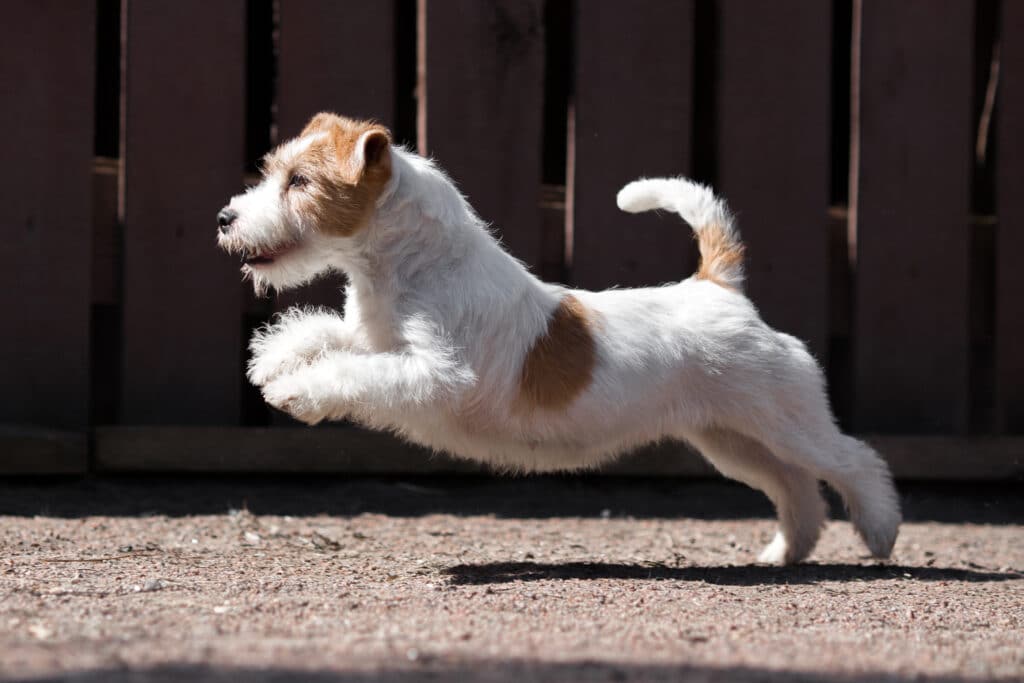
The wire coat, as the name suggests, is described as dense, rough, and has a wiry texture. A dog with a wire coat feels the exact opposite than when you touch or pet a smooth coated dog.
And even with proper grooming and brushing, a dog with a wire coat will still have rough and bristly hair. This type of coat requires regular hand-stripping or trimming to maintain its appearance.
Wire coated dogs can easily be distinguished from other dog coat types because they look very dapper with their mustaches, beards and eyebrows.
Breeds With A Wire Coat
- Jack Russell Terrier
- Kerry Blue Terrier
- German Wirehaired Pointer
- West Highland White Terrier
- Wire Fox Terrier
- Scottish Terrier
- Schnauzer
How To Take Care Of A Wire Coat
Taking care of a wire coated dog can be time-consuming due to the distinct texture of the hair. So, here are a few tips to take care of a wire coated dog:
- Hand strip the coat. Handstripping is a process where you pull dead and loose hair directly out of the dog’s coat. And by doing this, you allow new hair to grow and prevent the formation of tangles and mats. Among all the dog coat types, a wire coat is the only one that requires this grooming method.
- Use a brush and a comb. Brush the wire coat at least once a week with a pin brush to remove excess dead hear and a metal comb to pull out tangles.
- Do NOT use a conditioner. When bathing a wire coated dog, do not use a conditioner, unless you want to soften their coarse hair.
7. Curly Coat
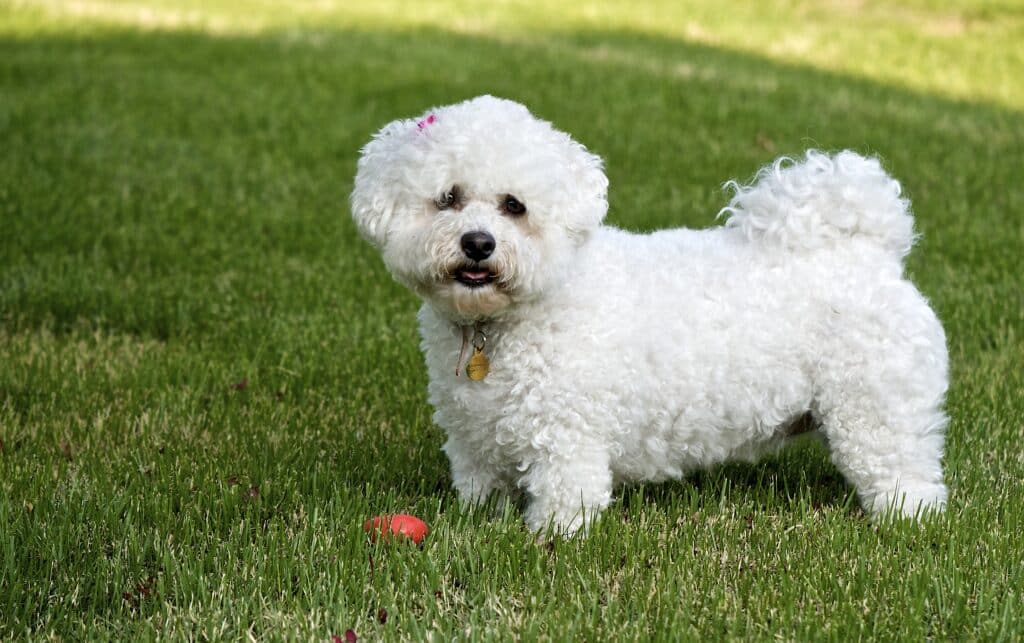
A curly coat is easy to spot on a dog. The coat is curled, but the tightness and size of the curls depend on every dog.
Curly coated dogs look regal and do not shed much. But do not be fooled! These dogs can be high-maintenance. Due to the dog’s curls, dirt and debris can easily get caught in the hair and will remain in the coat unless you brush or wash them.
Breeds With A Curly Coat
- Poodle
- Portuguese Water Dog
- Bichon Frise
- Airedale Terrier
- Irish Water Spaniel
How To Take Care Of A Curly Coat
As mentioned above, curly coated dogs can be high-maintenance since they require regular grooming and maintenance. So, here are a few tips on how to take care of a wire coated dog:
- Use a detangling spray. You can use this before you brush a curly coated dog. This will make brushing through the curls easier.
- Brush using a slicker brush. A slicker brush will help detangle any mats and will keep your furry friend’s curls in tip-top shape!
- Always use conditioner. When bathing a curly coat dog, it’s always best to use a conditioner to deal with any stubborn mats and tangles easier.
Here are a few conditioner recommendations for curly coated dogs:
- Towel-dry and then blow-dry. After a bath, it’s best to towel dry the coat first and then blow-dry it after.
8. Corded Coat
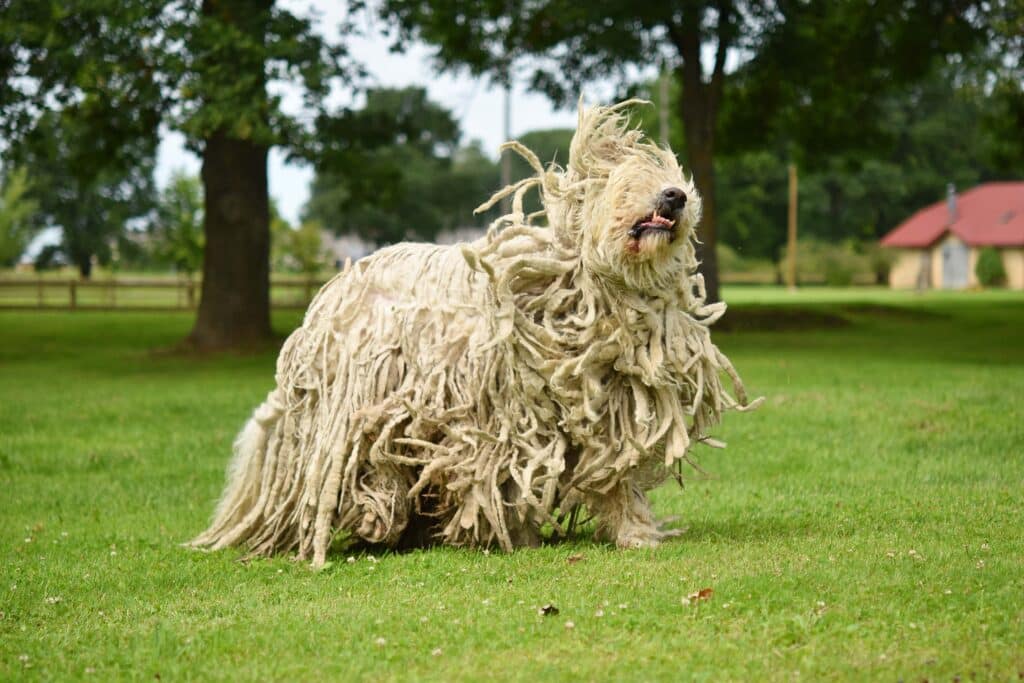
A corded coat is described as hair that forms cords. For us hoomans, we call them dreadlocks, but in the dog world, they’re called cords.
Unlike other dog coat types, corded coated dogs are not born with their cords. Instead, they are born with a curly and coarse coat that naturally, or with the help of hoomans, form mats that eventually grow as cords the older they get.
And did you know that some curly coated dogs can have their coat corded? For example, a Standard Poodle’s thick and curly hair can be corded with a hooman‘s help.
Breeds With A Corded Coat
- Komondor
- Havanese
- Poodle
- Hungarian Puli
- Bergamasco Sheepdog
- Spanish Water Dog
How To Take Care Of A Corded Coat
Among all the dog coat types mentioned so far, a corded coat might be the most difficult to groom and maintain. It requires a lot of effort, time and patience.
Here are a few tips to help you manage the uniquely beautiful corded coat:
- Help form the cords. While some breeds naturally form these cords, it is still vital that you know how to help them so that the coat doesn’t form into one huge mat.
- Do NOT brush or comb the mats. Instead, split the hair into sections so it’s easier for the hair to twist into cords.
- Trim the hair once every year. This is so that the dog can maintain the cords but avoid stubborn mats.
- Ensure that they are completely dry after a bath. Bathing is a given for these dogs, but so is making sure they are completely dry, from the inside out. Cords can easily trap dirt and encourage the growth of bacteria and mold when not completely dried. Using a blow dry on these dogs is also a MUST as air-drying them can take up to 48 hours.
9. Hairless Coat
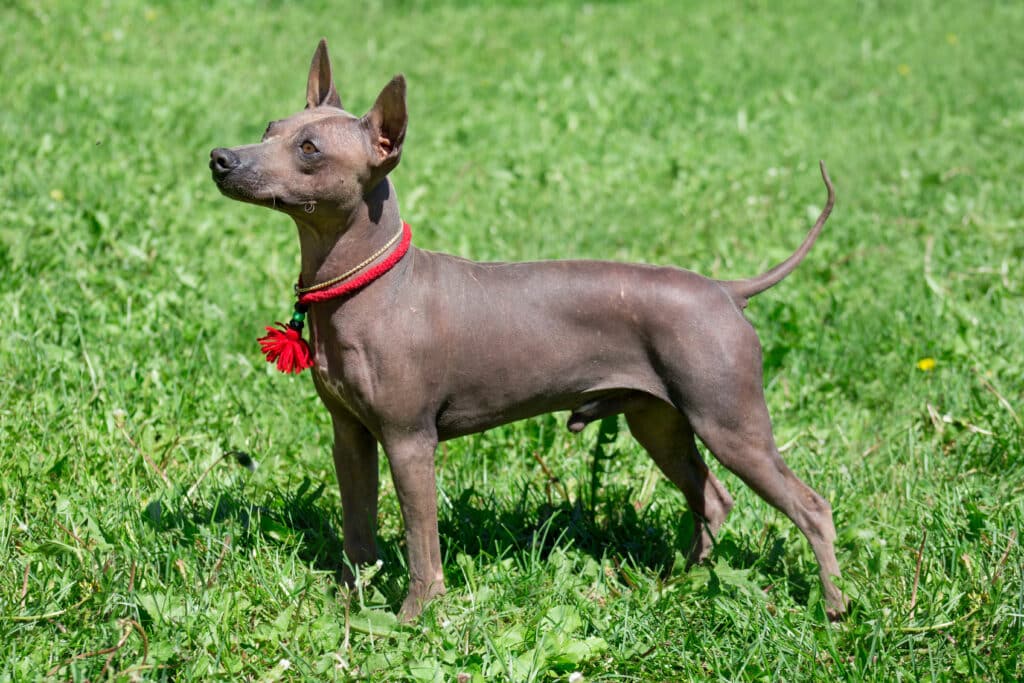
This guide on dog coat types will not be complete without mentioning the hairless coat. Dogs with this kind of coat are naturally hairless or have minimal hair. And despite being hairless and lacking a shiny or furry coat, these dogs still require proper care.
Hairless coated dogs are popular among allergy sufferers because they lack fur and dander. But because of the same reasons, these dogs are not safe from extreme weather conditions.
Breeds With A Hairless Coat
- Chinese Crested Dog
- Xoloitzcuintli
- Peruvian Hairless Dog
- American Hairless Terrier
How To Take Care Of A Hairless Coat
Hairless coated dogs require special skin care. Here are a few helpful tips to ensure your hairless dog’s skin stays healthy:
- Frequent bathing. Since these dogs do not have a layer of fur that can protect them from dirt and other elements, you have to bathe them more regularly than other dog coat types.
- Only use shampoo that is gentle on the skin. When bathing, you have to make sure that the shampoo you use on them has a gentle formula to avoid skin irritation.
- Use dog-safe lotion and sunscreen. Since there is no coat to brush, you have to moisturize their skin to prevent dryness and flaking. And since they are prone to sun burns, you have to use sunscreen to protect them from the harsh rays of the sun.
Here are a few recommendations from us:
- Provide additional insulation. Since they have no fur to provide them additional warmth during the colder months, hairless dog breeds must always wear a jacket outside even if it’s for a short walk.
10. Combination Coat
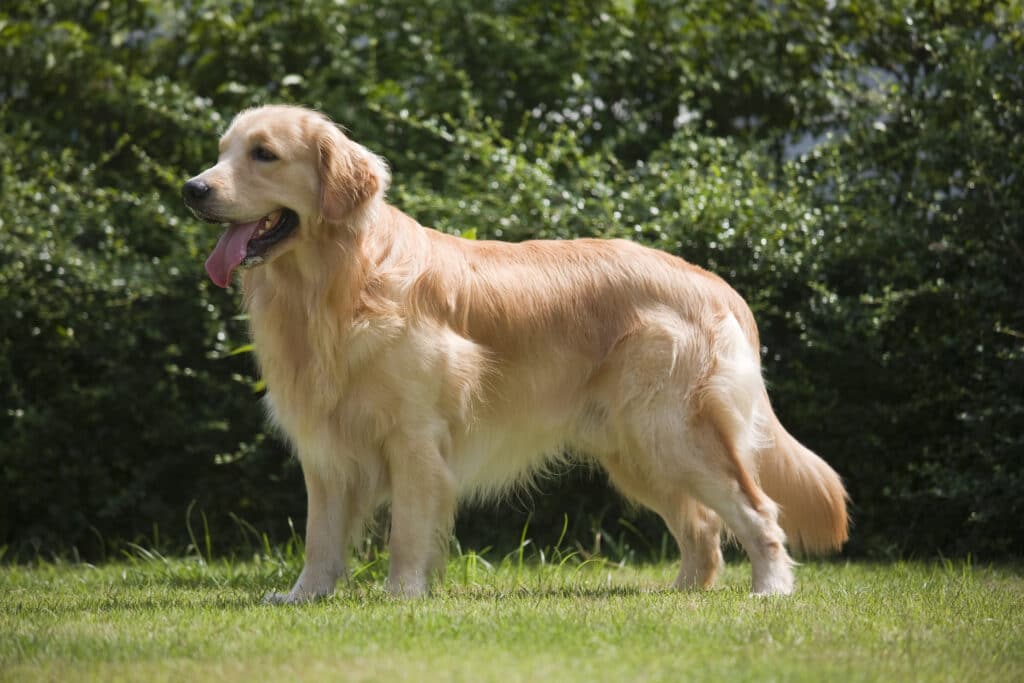
There are many breeds that have a combination of different dog coat types. The combination coat is described as a dog having longer hair in some parts of the body and shorter and softer fur in some areas.
Usually, dogs with a combination coat have longer hair on their tail, ears, legs and belly. The distribution of the short and long hair all over the body varies for each dog. Sometimes, you see the distinction between the type of coat, but sometimes it is more blended.
Breeds With A Combination Coat
- Cocker Spaniel
- Golden Retriever
- Border Collie
- American Water Spaniel
- Brittany Dog
- Tibetan Spaniel
- Australian Shepherd
How To Take Care Of A Combination Coat
Proper grooming and regular maintenance is a must for a combination coat. You have to take an approach that is appropriate for the texture and length of the coat. So, here are a few tips to help you take care of it:
- Brush weekly or daily. Depending on your dog’s activity level, brushing a combination coated dog should be done daily or weekly to prevent mats and tangles. And don’t forget to use a combination of tools to deal with both the longer and shorter hair.
- Trim when necessary. Since combination coated dogs have long hair in some parts of their body, it’s important to trim these areas occasionally.
- Don’t forget the ears! Since it’s more common for combination coated dogs to have longer hair around their ears, you have to make sure their ears are always clean and dirt-free. Don’t forget to monitor them too and look for any signs of infection or problems.
Conclusion
Understanding different dog coat types and knowing how to properly take care of them is an essential part of being a dog parent.
Taking care of your dog and its coat requires a lot of time, attention, and patience. But with the right attitude, tools, and products, not only will you be able to maintain your dog’s coat shiny and clean, but you’ll also keep them happy and healthy.



![Oatmeal Dog Shampoo & Conditioner 17oz [USA] 5 in 1 Plant-Based Organic Sulfate-Free Soap-Free-Tearless Moisturizer for Dandruff Allergies & Itchy Dry Sensitive Skin-Puppy Grooming [Pro Pet Works]](https://m.media-amazon.com/images/I/41879dA1aHL._SL160_.jpg)










